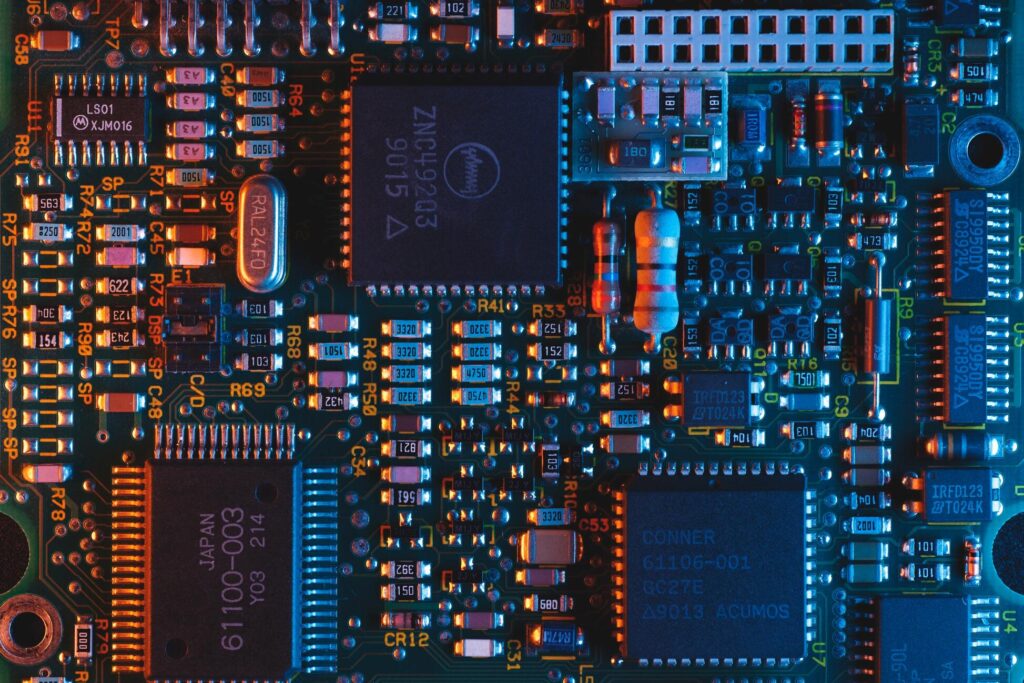There is no question about it — security breaches are happening at alarming rates.
The most common method of attack? Ransomware, followed by unauthorized network access and access as a result of unsecured servers and databases.
As reported by Black Kite’s 2022 Third Party Breach Report, third-party breaches leaked an estimated 1.5 billion users’ personally identifiable information (PII) last year. In addition, more than 50% of the exploited vulnerabilities were more than a year old.
The data points to a couple of unfortunate facts IT administrators know too well: a) traditional segmentation methods no longer mitigate hacker threats effectively and b) falling back on making crucial updates, patches, and policies isn’t worth the risk.
Organizations of all types and sizes must implement microsegmentation best practices as part of Zero Trust security models to remain protected. Today’s data center, cloud, and hybrid environments require more versatile safeguarding to withstand attempted breaches than in years past.
In this article, you’ll learn what microsegmentation is all about, its benefits, and how to implement the framework in your IT environment. Let’s begin by clearly defining our subject.
What Is Microsegmentation?

Microsegmentation is a security practice that involves dividing a data center or cloud environment into smaller segments; the goal is to increase network security by creating permission checks within the network itself.
Also referred to as “east-west segmentation,” or “application segmentation,” the practice evolved from network segmentation to meet needs stemming from modern public cloud environments.
While microsegmentation differs from network segmentation, both are equally important when creating a formidable network security strategy. Network segmentation applies ideally to north-south traffic, or network traffic flowing into and out of a data center or cloud environment.
Microsegmentation, on the other hand, adds extra protection to east-west traffic, or network traffic between devices or applications within the network.
But that’s not all there is to know if you really want to distinguish between the two IT practices. Below is a more detailed comparison between microsegmentation and network segmentation.
Network Segmentation vs. Microsegmentation
Check out the table below for a quick primer on network segmentation vs. microsegmentation:
| Attribute | Microsegmentation | Network Segmentation |
| Definition | Divides data centers and cloud environments to create secure zones that protect individual workloads. | Divides the network into different segments, with each acting as its own network subnet with safeguards against who can access the segment. |
| Implementation mode | Software defined networking (SDN) defines and manages security across several workloads. | Virtual local area network tags (VLAN tags), access control lists (ACLs), and firewall rules are used to implement security policies. |
| Policy enforcement | Policies are enforced on Virtual Machines (VMs) and hosts. | Policies are enforced on VLANs and subnets. |

How Does Microsegmentation Work?
Microsegmentation builds on the premise of a Zero Trust security model; for application workloads, microsegmentation allows only particular application traffic to pass within and across certain segments, while restricting unapproved sources of traffic.
As a result, IT administrators can apply security policies to separate workloads, greatly reducing their reliance on firewalls and other network-based security controls. Similar to Zero Trust, an architecture of microsegmentation assumes that traffic within the environment is not inherently trustworthy, and values the principle of least privilege.
All this is made possible by software defined networking (SDN). This practice allows admins to define segment boundaries alongside other particulars, while removing the need of physically having to do so.
Types of Microsegmentation
Microsementation typically falls into the following five categories:
1. Environmental
Here the goal is to ensure workloads in different environments — production, testing, and development — are isolated with the exception of connecting exclusively to workloads in the same environment. In this case, the microsegmentation efforts are not sophisticated, described by IT experts as “coarse-grained.”
2. Application
At this level, microsegmentation is also called “application ring fencing.” Only workloads associated with a specific application in a particular environment are allowed to connect to each other (e.g., payment processing applications).
3. User
User microsegmentation limits application visibility to members of specific groups. User identity and group membership lay the foundation for this level, thereby reducing the need for changing your infrastructure.
4. Tier
This method ensures that only workloads associated to a specific tier in an application within a specific environment can communicate with each other. For instance, allowing the processing tier to communicate with the database tier but not with the web tier.
5. Process
The granular level of process segmentation is pretty high, operating at the process or service level. For instance, isolating a specific software service and only allowing it to communicate along permitted network ports, protocols, and paths.

Benefits of Microsegmentation
Most organizations looking to adopt microsegmentation have security in mind. But there are several additional advantages involved, including:
1. Compliance
With its assurance of almost absolute security, microsegmentation is an essential contributor to regulatory compliance. By separating segments of data that are bound by regulations such as GDPR, HIPAA, and PCI, it is possible to set strict controls and pass audits as required.
2. Attack Surface Reduction
On-site data centers are continually expanding into the cloud. This shift comes with a heightened risk of attack because the previously existing on-premise security is no longer sufficient. Microsegmentation enforces control at such a granular level that it is very difficult for a threat to move between workloads.
3. Breach Mitigation
Due to the increased visibility and control over data flows between workloads, it’s easier to detect and address cybersecurity threats. Microsegmentation limits lateral movement and curtails an attacker’s ability to move within the network to find the intended target.
4. Policy Management
Enforcing sound security policies in the workplace not only brings out a feeling of being protected, it also paves the way for higher quality production standards.
Microsegmentation Use Cases
Admins can employ microsegmentation to several different IT scenarios, such as securing hybrid clouds, segmenting development environments, enforcing compliance, securing applications before migrating to the cloud, and more. The most common technical and business issues addressed by the security strategy include:
- Development and test environment separation: Unauthorized access to your business’ operating systems, whether accidental or deliberate, can compromise integrity. Separating development from test activities while restricting developer access to test or operational environments greatly reduces the risks involved.
- Incident containment and response: By preventing the movement of threats between segments and providing log information, microsegmentation provides the perfect solution for identifying security issues and formulating incident responses rapidly enough to save your business.
- Sensitive information protection: Microsegmentation provides extra security to protect soft assets such as customer and employee information, intellectual property, and financial data against malicious actions.
- Hybrid environment management: Since you can implement uniform security policies across several service providers and data centers, it is possible to manage several applications that function across hybrid cloud environments.

Microsegmentation and Zero Trust Security
Zero Trust policies restrict access to the organization’s resources and systems by requiring authentication, authorization, and continuous validation of security configurations. As a result, employees and applications only access the data and services they need.
Even if an employee were to be authenticated to one resource, further requests into the network have to be evaluated and either permitted or blocked in accordance with preset access control policies. Microsegmentation makes it possible to enforce Zero Trust effectively due to these tight access controls created between workloads.
How to Implement Microsegmentation
A good implementation process leads to early wins. For this reason, it’s essential to get the entire security team on board from the beginning. A proven roadmap for executing microsegmentation looks something like this:
1. Define Goals
Your microsegmentation strategy will only be as effective as your organizational goals are clear! Consider your unique organizational needs, classification of end users, and IT resources during the goal defining process. You may choose to select, train, and equip a task force team at this stage if you haven’t done so already.
2. Segment Workloads
Gather information on the applications and workloads, internal and external communications, services, and users who’ll require access. To do so, you can look into configuration management databases (CMDBs), system inventories and IP lists, traffic and event logs, network devices, and firewalls. Use this data to classify the applications within your environment, or those you plan to develop or implement in the future. With this list, group applications (those with similar purposes, open protocols, user access needs, etc) and identify the major differences between these groups that might logically separate them from one another.
3. Implement Least Privilege As Much As Possible
Break down the full picture of each application into tiers and individual services. Then, specify which users should have access to those designations. Following a Zero Trust security model means assigning the least amount of privileges users need to get work done. Across the implementation timeframe, assign applications with critical importance to more granular security policies first, and address those that involve less risk thereafter.
4. Implement Gradually
It’s essential to start slow and gain speed as your organization grows accustomed to microsegmentation. We recommend following a four-step implementation process that begins with visibility, followed by policy creation, testing, and continued enforcement of policies across organizational lines. This method will allow you to identify unanticipated issues and generate solutions without adversely affecting crucial business objectives.
Remember: the goal of this process is not to achieve perfection as quickly as possible. Target the most crucial areas methodically, accurately, and comprehensively.
Focus on reducing high-risk attack surfaces significantly before moving onto other areas. In addition, expect for unexpected issues to arise during implementation and allocate time to fix them accordingly.
Implement Zero Trust with JumpCloud
When done right, microsegmentation doesn’t involve multiple security teams, result in organizational downtime, or require disruptive infrastructure changes.
With JumpCloud, you can rest easy knowing you’re receiving comprehensive network protection — on premise, in the cloud, or in a hybrid environment. Ready to see why 100K companies and counting count on JumpCloud?




